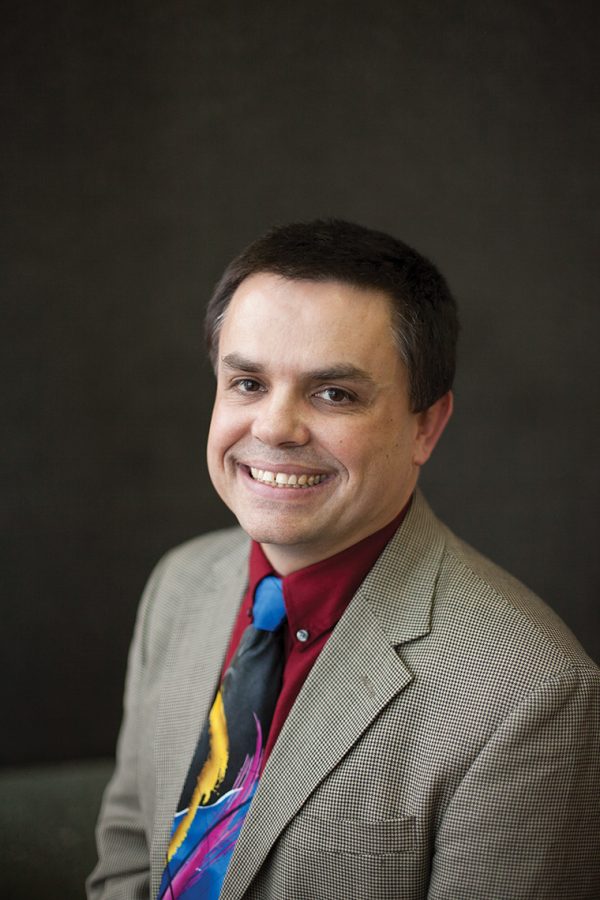LIGO team makes local waves
February 29, 2016
Scientists from Northwestern University, the University of Chicago and the Adler Planetarium have been credited with helping to prove a key piece of Albert Einstein’s century-old general relativity theory.
The local scientists are among about 1,000 worldwide who worked on the so-called LIGO project.
The project’s mission is to detect gravity waves, a phenomenon predicted by general relativity but never observed. LIGO stands for Laser Interferometer Gravitational-wave Observatory, costly devices decades in the making that the scientific world hoped could finally detect the elusive waves.
When Einstein unveiled his theory in 1915, he rejected Newton’s concept of gravity, seen as a constant force pulling lighter objects toward heavier ones. Instead, he visualized the cosmos as a fabric composed of space and time, in which objects make the fabric sag according to their mass. Imagine a bowling ball and a tennis ball on a blanket. Both would cause the blanket to sag, but the bowling ball would sag
more deeply.
Because of our inherent sensory limits we cannot see this “blanket” or its effects, hampering physicists in their efforts to confirm this essential part of general relativity. But Einstein also proposed something that might make verification possible, saying the distortion of spacetime would cause ripples in the gravity wave blanket, and these waves might be detectable.
In pursuit of this goal, observatories in Hanford, Washington, and Livingston, Louisiana, were both outfitted with the interferometers—giant, hypersensitive, L-shaped machines that use lasers and mirrors to detect the waves without the interruption of outside forces, according to Shane Larson, a LIGO collaborator as well as an astronomer at Adler Planetarium and professor at Northwestern University.
The detection of gravitational waves was finally achieved last September and publicly announced on Feb. 11. According to LIGO scientists, the waves were spawned by the powerful collision of two black holes a billion years ago in a distant part of the universe. The waves, traveling at the speed of light, arrived at Earth on Sept. 14 and announced themselves by leaving matching blips at each interferometer only milliseconds apart.
While astronomical discoveries happen frequently, Larson said LIGO’s effort creates a new way to study the universe without relying on what can physically be seen, like gravitational waves.
“This is one of the most important discoveries in the last 150 years of astronomy,” Larson said. “It’s as important as the discovery that the universe is expanding; it’s as important as the discovery that there are galaxies outside the Milky Way; it’s as important as the discovery of the cosmic microwave background.”
Longtime veteran of the LIGO collaboration Vicky Kalogera, professor of physics and astronomy and director of Center for Interdisciplinary Exploration and Research in Astrophysics at Northwestern University, said while the project’s outcome is a once-in-a-lifetime occurrence for its collaborators, the discovery itself is comparable to the first time Galileo turned his telescope “toward the cosmos.”
Kalogera, one of the senior astrophysicists working on the project for the last 15 years, said hearing the news of the discovery in September—announced months later because of the long process of proving the waves legitimate—was a partly “shocking” experience, especially because the newest LIGO machines had only been running on their own for three days before the detection.
The quickness of the gravitational wave discovery implies consistent detections could be possible, Kalogera added.
“Even ourselves sometimes didn’t believe we could get a detection so early in our efforts [with the advanced detectors],”
she said.
Kalogera said she joined the international group in its early stages when it was still working with preliminary detectors that were not as sensitive as the most recent advanced version.
“Through the years, the collaboration became much better organized and moving toward satisfying a goal by the set deadlines,” she said.
In the early years of Kalogera’s work, she said she would create predictions about the possibility of wave detection while in the last seven to eight years, she and her Northwestern team became more involved in day-to-day data analysis.
Daniel Holz, associate professor in the Physics Department as well as at the Enrico Fermi Institute and Kavli Institute for Cosmological Physics at the University of Chicago, said his participation in the collaboration for the last two years has primarily included extracting physics and astrophysics from the LIGO detection data along with other professors and graduate students.
While it is difficult to predict now how this discovery will affect future astronomical work, Holz said it will mostly depend on LIGO’s future detections, especially with new substances like neutron stars.
“We don’t know what else we’ll hear,” Holz said. “The trick is as we hear more things, this [project] becomes more important—this way of probing the universe. This is just the first step.”
Despite the official announcement, Larson said there is a great deal of work left for the team to do. Because the data from the team’s published study only includes data from the first month that the advanced LIGO machines were turned on and detecting waves, there are still three months of data—from September to time of the announcement—to look at.
Though the advanced LIGO machines are currently turned off, Larson said they will be switched back on in late summer and research will continue.
“[LIGO] took the concerted effort of thousands of people for a long, long time to make it happen,” Larson said. “It was a huge risk and a tremendous amount of effort but the magnitude of the discovery makes it clear that the investment on all of our parts was really worthwhile.”








